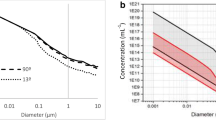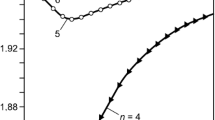Abstract
The result of a measurement refers in principle only to the amount of substance actually contributing to the analytical signal. However, an appropriate definition of the measurand must include a specification of the system for which the result of the measurement should apply. All systems being inherently heterogeneous, representativity assumes importance for the metrological quality of a measurement, and the process needed to ascertain representativity is sampling. The contribution from this characteristic must be included when expressing the uncertainty of the reported value of the measurand. Representative sampling of systems that are infinite or non-uniform was developed by Pierre Gy in his Theory of Sampling. Finite systems can achieve uniformity by mechanical treatment and mixing; the heterogeneity of these systems can be characterized by a sampling constant, expressed in units of weight, for each particular species being determined. Examples of the contribution of sampling to the uncertainty of analytical results are discussed for some biological materials.
Similar content being viewed by others
References
De Bièvre P (2004) Accred. Qual. Assur. 9(3):132-136
EURACHEM/CITAC (2000) Quantifying uncertainty in analytical measurement, 2nd edn. LGC, Teddington, UK
ISO/FDIS (2002) 11648-1: Statistical aspects of sampling from bulk materials. Part 1: General principles. International Organization for Standardization, Geneva, Switzerland
Wilson AD (1964) Analyst 89:18–30
Visman J (1969) Mater Res Standard 9(11):8
Kurfürst U, Grobecker KH, Stoeppler M (1984) Trace Elem 3:591
Geelhoed B, Glass Hylke-Jan (2001) Geostandard Newslett 25:325–332
Ingamells CO, Switzer P (1973) Talanta 20:547–568
Ingamells CO, Pitard FF (1985) Applied geochemical analysis. Monographs on analytical chemistry and its applications, vol 88. Wiley, New York
Pitard FF (1989) Pierre Gy’s sampling theory and sampling practice. CRC, Boca Raton, FL
Gy P (1998) Sampling for analytical purposes. Wiley, Chichester, UK
ISO (1993) GUM: Guide to the expression of uncertainty in measurement. International Organization for Standardization, Geneva, Switzerland
ISO (1981) Guide 31. International Organization for Standardization, Geneva, Switzerland
Heydorn K (1984) Neutron activation analysis for clinical trace element research, vol 1. CRC, Boca Raton, FL, p 35
Heydorn K, Damsgaard E (1987) J Radioanal Nucl Chem 110:539–553
Chatt A, Rao RR, Jayawickreme CK, McDowell LS (1990) Fresen J Anal Chem 338:399–407
Heydorn K (1991) Mikrochim Acta III:1–10
IAEA (2002) TECDOC-1295: Reference materials for microanalytical nuclear techniques. International Atomic Energy Agency, Vienna, p 103
Heydorn K, Damsgaard E, Rietz B (1980) Anal Chem 52:1045–1049
Ingamells CO (1974) Talanta 21:141
Esbensen K, Heydorn K (2004) Chemometrics Intell Lab Syst (in press)
Acknowledgements
One of the authors (KH) acknowledges financial and mental support from Thomas Anglov and other GUPpies at Novo Nordisk Quality Support, Bagsværd, Denmark.
Author information
Authors and Affiliations
Corresponding author
Rights and permissions
About this article
Cite this article
Heydorn, K., Esbensen, K. Sampling and metrology. Accred Qual Assur 9, 391–396 (2004). https://doi.org/10.1007/s00769-004-0808-z
Received:
Accepted:
Published:
Issue Date:
DOI: https://doi.org/10.1007/s00769-004-0808-z




